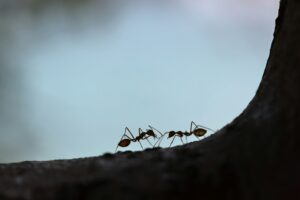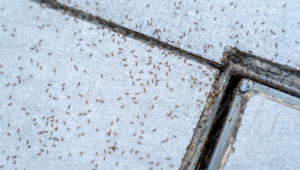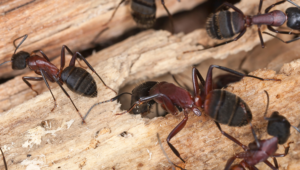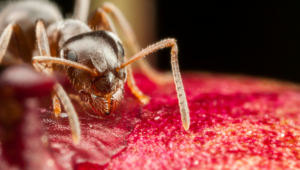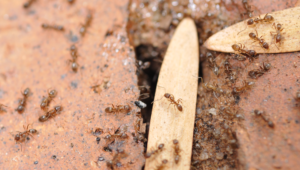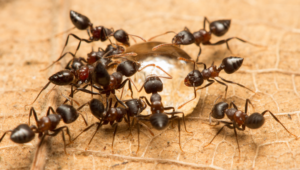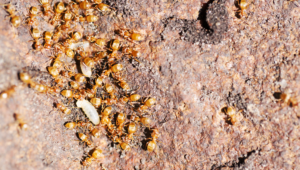Pavement Ants
Your Ant Problem, Gone For Good, Guaranteed.
Request a Callback
We’ll give you a call to discuss the best pest application for you:
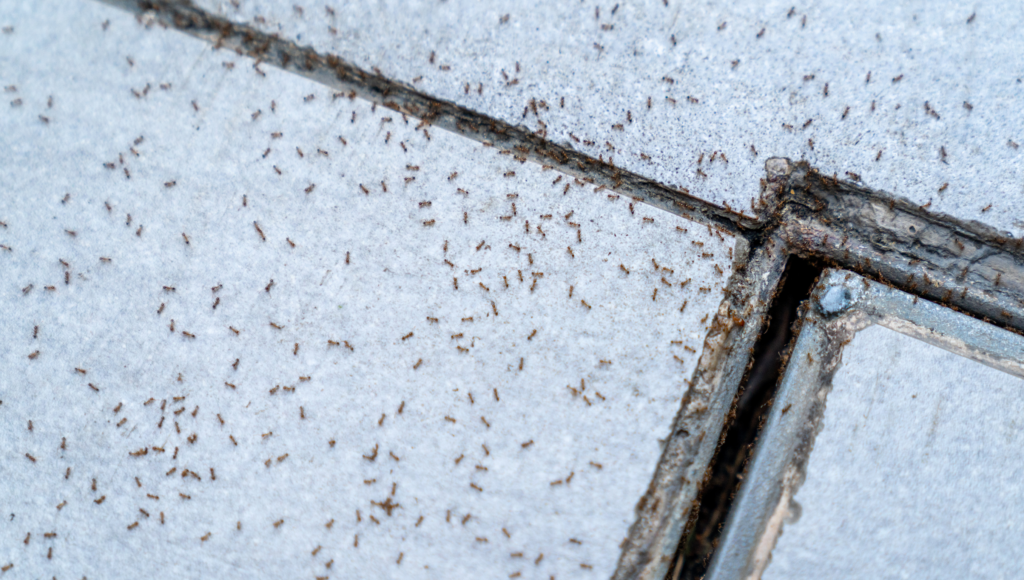
Pavement Ants
___
Description: Pavement ants are 1/16- 1/8 inch long with a dark body and lighter colored legs. They are easily identified by the narrow, parallel grooves on their heads and thoraxes.
Biology: The developmental time (egg to adult) is 36 to 63 days. Indoors, swarmers emerge anytime, and they emerge outdoors in June and July.
Habits: Pavement ants are commonly found in metropolitan areas. They nest outdoors under flat stones, under sidewalks, along curbing, under concrete slabs, etc. They invade structures in search of food and are a particular problem in areas where slab-on-grade construction is prevalent. Inside structures, they nest in walls, insulations, floors, and near heat sources during the winter. They feed on insects, meats, seeds, and sweets, but they prefer meats and greases. They are slow-moving insects and are frequently observed in areas where they are prevalent. They forage in trails as far as 30 feet from the nest. Although they are not aggressive, workers can bite and sting.
